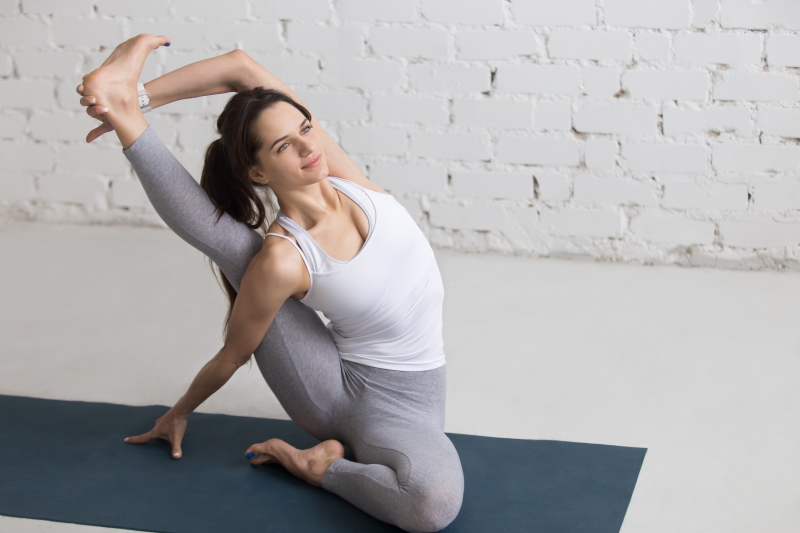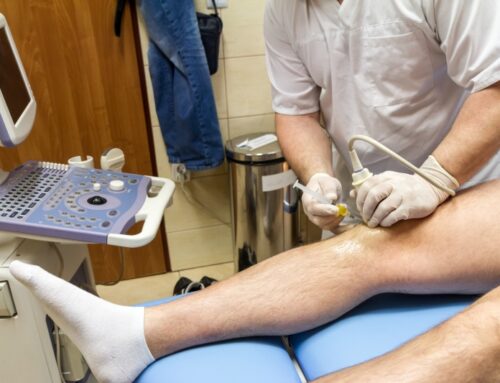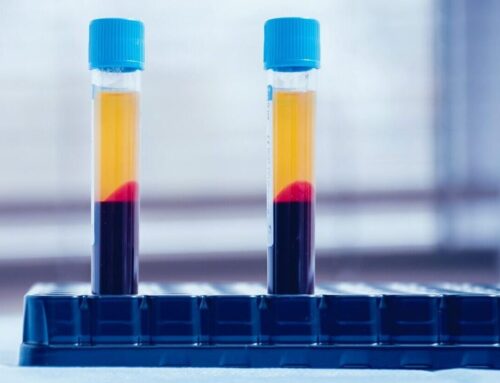What is tendonitis?
Tendons are rope-like collagen proteins bundled together to form fibrils. The primary function of tendons is to transmit forces from muscle to bone for movement. In tendonitis, there is a breakdown of collagen proteins of the tendon. Overload of the tendons either gradually or due to sudden stress can cause tendonitis. Aging and diseases such as obesity and diabetes can also contribute to tendonitis. A tendonitis or tendon specialist understands the importance of finding those factors that have led to tendonitis.
Is tendonitis due to inflammation?

Previously, we thought active inflammation was important, a process often referred to as tendinitis. However, we now know that tendons swell with water and then undergo a slow breakdown of collagen proteins. This new understanding has led to a change in treatments.
What features are common in tendonitis from a tendonitis specialist?
Generally, people with tendonitis report pain arising from their tendon. Often, pain occurs with an activity that stresses the tendon such as running for Achilles tendons or knee tendons or playing tennis or golf for elbow tendons. Usually, pain ‘warms up’ with activity but often gets worse when you cool down.
Most cases of tendonitis are easily diagnosed by pain history, but an examination is useful to rule out other causes such as pain arising from muscle, ligaments, or joints. For example, knee pain in a runner can be due to a cartilage injury of the knee joint rather than a patellar tendonitis. Overall, the job of tendon specialists is to get the right diagnosis the first time.
Also, it is important to find the reasons for developing tendon pain. Often, we find people who have pushed themselves too much with their training. Usually, there has been a recent increase in training intensity such as the introduction of interval or hill training. In some cases, certain conditions such as menopause, obesity and diabetes increase the risk of tendonitis.
Does a tendonitis specialist always perform a scan?

Tendinosis radiology
Although not essential, scans such as ultrasound or MRI are helpful for complex cases or when cases do not respond to simple treatment. In addition, a routine tendon scan indicates that the pain is most likely not related to the tendon.
Typically, ultrasound shows changes in tendon swelling, collagen breakdown, and increased blood flow. The advantage of ultrasound is that it is cheap and often used together with a doctor’s appointment saving time and money. However, we suggest an MRI scan for some tendons, such as hamstring or hip tendons.
One advantage of MRI in tendonitis is seeing other structures around the tendon, such as joints and muscles. For example, in the hamstring tendon, MRI also determines the state of the hip and sacroiliac joints.
What are the most effective treatments for tendonitis?
Previously, doctors advised patients to take anti-inflammatory tablets such as ibuprofen. Remember, they used to believe that acute inflammation played a key role. However, recent evidence suggests that medications like ibuprofen may slow healing. Nevertheless, a short course of ibuprofen can help with acute tendon pain.
More useful is exercise therapy supervised by an experienced physiotherapist.
How does exercise therapy work in tendonitis?
We don’t know exactly. However, we think that exercise works by stimulating collagen proteins in the tendon or increasing muscle strength. Positive effects occur irrespective of the type of exercise. For example, in Achilles pain, concentric loading, which forces your muscle to shorten while they contract, has a similar effect to eccentric loading, where the muscle lengthens. An important concept is that the exercise load on the tendon should be heavier but less frequent for lower limb tendons (such as Achilles or patellar tendons). On the contrary, exercise should be relatively light but more frequent for upper limb tendons (such as tennis elbow or shoulder tendons).
We also think that exercise provides graded exposure, so the tendon and person become used to heavier loads over time.
An example of strengthening for the calf:
First, you should reduce or avoid activity that has aggravated your Achilles. For example, suppose you are a runner. In that case, we suggest you reduce your running frequency, intensity, and duration until the pain becomes stable (see below for the definition of stable tendon pain). As a general rule, we suggest reducing your running by about 50% and then reassessing.
Next, strengthening exercises help to correct weakness and reduce pain. An important principle is to progress your exercises (add weight) to keep you improving.
Strengthening sessions should be performed every 3rd day consisting of seated, and standing calf raises on a step. In addition, exercises should be performed with a single leg as recent evidence suggests weakness also occurs on the pain-free side. Aim for three sets of 8-10 repetitions for each exercise. Finally, you should add weight to your body (e.g., add 2.5 kg) every week to stimulate more strength and muscle development. For the calf, we aim for strength goals: for standing calf raise, we recommend lifting an extra 1/2 x body weight; for seated calf raises, we recommend lifting an extra 1-1.5X body weight.
While we focus on concentric and eccentric exercises (isotonic), we sometimes use just eccentric exercises to add a higher load on the tendons.
Can you exercise through tendon pain?
Generally yes. We think exercising through pain is ok as long as the pain is stable.
Stable pain is low-level tendon pain that occurs after exercise and lasts less than a day. Some people use numbers – say less than 3/10. Alternatively, unstable pain is a high level (greater than 3/10), lasts for more than 24 hours, and requires tablets such as ibuprofen.
Generally, you should aim to rehab and train with stable pain. Moreover, unstable pain means you’re doing too much for the tendon to handle.
What about using a metronome with tendon exercises?
Some preliminary evidence suggests that chronic tendon pain leads to muscle inhibition driven by the brain. We think that using a metronome improves muscle drive by reducing muscle inhibition. We call this activity tendon neuroplastic training.
Does a tendonitis specialist use other treatments?

While exercise is the most effective treatment, we use other treatments to improve the results of exercise.
First, GTN patches have become popular for tendonitis and are a good non-invasive alternative with good results. We use patches to reduce pain in tendinopathy. Patches are applied to the skin on to of the swollen tendon. The patch is left on for most of the day but must be taken off at night. Generally, we use patches for 1-2 months.
Second, Shockwave therapy directs sound waves to the affected tendon. The sound waves stimulate the body’s own healing capacity and stun the pain-generating nerves. Evidence suggest shockwave works for hamstring, gluteal and Achilles tendinopathy.
Third, injections for tendonitis are used to improve the healing of tendons. A recent review of different injections used in tendinopathy co-authored by Dr Masci suggests that there are no clear favourites. However, there is some concern that cortisone injections can cause harm when used for tendons such as tennis elbow. PRP injections are becoming more popular for some tendons although evidence is lacking for most tendons. Other options include needle tenotomy and sclerosants.
Finally, we should only use surgery for cases that fail all other treatments. A recent review of surgery in tendinopathy suggests that the outcomes are no different to physiotherapy despite risks of surgery such as infection or wound infection. An alternative to tendon surgery is tendon scraping. This is a less invasive option and has shown good results for some tendons.
Frequently asked questions to a tendonitis specialist about tendonitis?
Which diseases cause tendonitis?
Generally, excessive exercise or sport that is well and above what the tendon can handle causes tendinitis. However, more recently, we know that certain medical conditions can increase the risk of tendonitis. Examples include diabetes, obesity, high cholesterol, gout and inflammatory arthritis such as psoriatic arthritis. Another example specific to Achilles pain is the presence of a large plantaris tendon close to the Achilles tendon. One of the advantages of seeing a tendon specialist is to sort out other possible causes.
Can I run with Achilles tendonitis?
Yes but we recommend you correct calf weakness before returning to running. Also, running needs to be slow and progressive over weeks. Moreover, you should run on the days when you’re not strengthening the calf (eg calf strengthening days 1 and 4 and 6, and running days 2 and 5 in a week). Also, you should only increase your running if the pain remains stable (see above).
Can Yoga cause tendonitis?

As a general rule, you should avoid direct stretching of sore tendons. Previously, we said that Yoga makes your tendon pain worse. However, we know that Yoga can be modified to reduce the load on tendons. An example is a Yoga butt injury where exercises can be modified to help and not hinder tendonitis.
What are the best shoes for Achilles tendonitis?
Generally, we suggest a stable shoe if you have flat feet and a cushioned shoe if you have high arches. More importantly, we recommend you avoid tight-fitting shoes or shoes that push on the tendon. We know that direct pressure on the tendon – also called frictional load – can worsen tendonitis pain.
Also, a heel raise may reduce Achilles tendon load. This is particularly useful for insertional Achilles tendonitis – the heel lift minimizes the pressure of the calcaneal bone on the Achilles tendon.
Is there a psychological component to tendon pain?
Yes. We know that people with anxiety and depression find it more challenging to manage their tendon pain, similar to other chronic pain states. Why this is still up for debate. Nonetheless, treating people’s anxiety regarding their tendon pain is essential in the overall context of treatment.
Tendon neuroplastic training: is there a better way to improve tendon rehab?
Yes. Tendon neuroplastic training is a new rehab principle for upper and lower limb tendonitis. By using a metronome during strength training, you can improve the control of muscle contraction. Recent evidence suggests that improving strength and muscle control may accelerate tendon rehab.
Final word from Sportdoctorlondon: a tendonitis and tendon specialist
Tendonitis is a complex problem to treat. Most people with tendonitis have an unrealistic expectation of a ‘quick fix.’ Generally, tendonitis is rarely fixed quickly. Overall, exercise is effective in most cases, and occasionally other treatments such as shockwave therapy and GTN patches help. Finally, we should only consider injections or surgery if all other treatments fail. You should see a tendonitis specialist doctor.








Leave A Comment